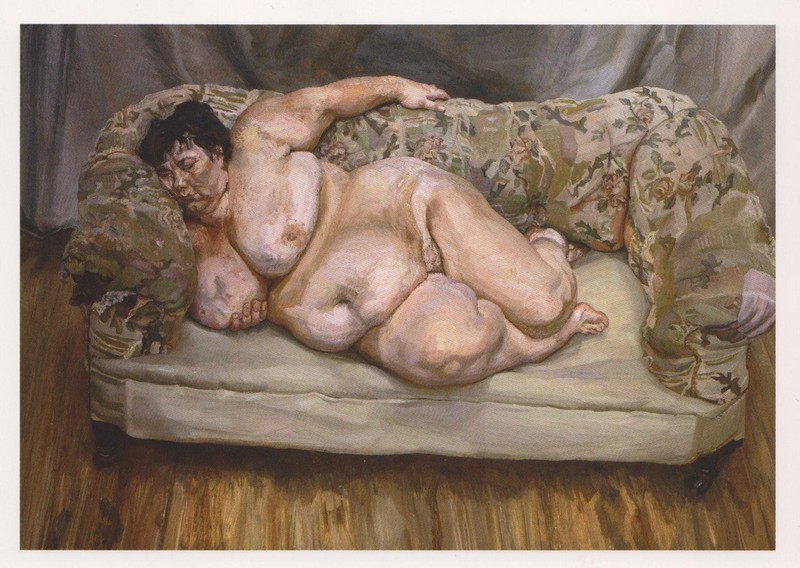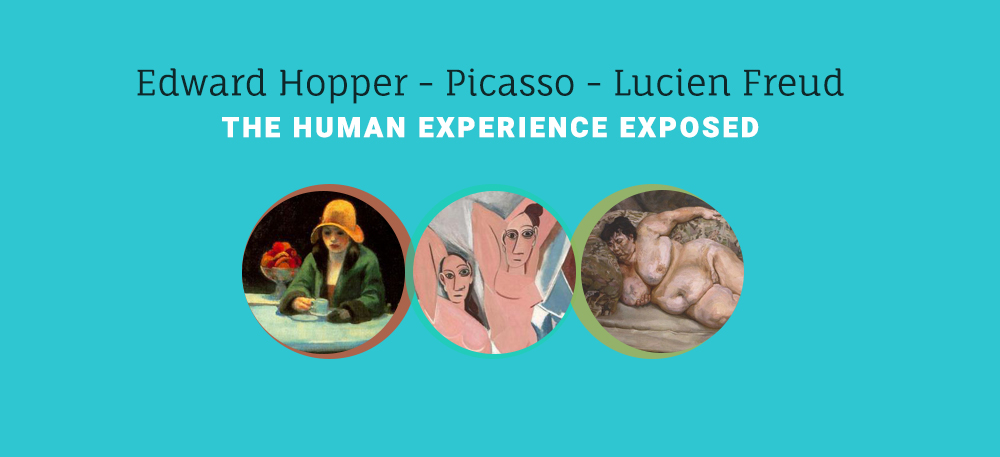The twentieth-century’s most provocative modern artist and thinkers changed Western culture and perspective.
This trend of understanding humanity has inspired generations of artists.
Modern Art reimagines art and the human form to resemble realism and worldliness.
Sigmund Freud studied the interior life of ordinary people and exposed layers to identity. Artists like Lucien Freud—Sigmund’s grandson—and Picasso have illustrated the depth of human subjectivity and solitude artistically.
Freud’s ideas about the human mind is depicted Picasso’s Les Demoiselles d’Avignon. The menacing figures disrupt the viewer’s want for proportion and symmetry. Picasso depicts a coarse profile of the human psyche through human figures who do not resemble classical models of the human form. Although less abstract than Picasso, Lucien Freud illustrates vastness and complexity with the subjects he observed, as seen in his portrait of Queen Elizabeth II.
Modern art favors micro perspectives over stereotypes of human behavior.
The way humans may imagine the activity in New York city, composed of traffic and bright lights, affects the experience of a person being there in the moment. It is even easier to imagine sharp-looking businessmen jaunting down Madison avenue. Modern art favors micro perspectives over molds and stereotypes of human behavior.
For example, a famous modern American artist captures this focus on the human mind. Edward Hopper’s the Automat (1927) depicts the Modernist style of eclipsing the macro, such as New York City, with the subjective. The Automat displays a female sunk in dusky colors while in a diner alone. Hopper concerns himself with nudity, or examining human loneliness.
Where Sigmund Freud employed a cigar and notebook to probe his subjects—Lucien Freud, in the same fashion, was equipped with a canvas and brush. Like Hopper, Freud portrays humans as vibrantly alone, musing in dream-like states.

Freud’s portrait Benefits Supervisor Sleeping uses the symbol of a couch that showcases his attention to subjects. Freud is concerned with intimately capturing the emotions of his models, similar to his grandfather’s sessions with patients who lounged on his famous therapy couch.
Benefits Supervisor Sleeping provokes a collision of responses that accentuate both grotesqueness and beauty; apathy and sadness. Lucien Freud fundamentally challenged the pantheon of classical art by challenging Western views about art and subjectivity.
Comparisons between classical and modern art showcase Lucien Freud’s innovations. For example, the heavy-set lady in Benefits Supervisor Sleeping is more naked than the marble statue of David. Her flesh bursts with obtuse dimensions and she appears to be alone. A stylistic choice of Lucien’s was to capture his model’s nakedness authentically by causing friction between intimacy and intrusion. Lucien captures his models in mental states that lack awareness of their nakedness or disproportion. Viewing a Lucien Freud portrait irks the spectator to feel embarrassment for the model’s nakedness.
Classical art can appear fixed. The statue of David’s marble body is a popular example. Modern art, opposed to classical art, sketches humans as worldly, grotesque, and strangely beautiful.
As an art viewer, perception and meaning-making practices are yours to make.








